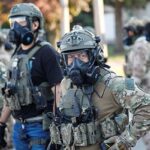The geese are already proficient at it. They are riding the air currents produced by formation members in front of and surrounding them when you observe them flying in a v-formation.
Todd Graetz hopes to apply that idea at a Texas airstrip to upend the air cargo industry.
With the use of modified planes that are hauled into the air by another aircraft, Aerolane has been imitating the techniques used by migratory birds.
Cameras mounted in the towed aircraft were able to record air vortices that a glider can use to stay in the air thanks to smoke emitted from the leading plane.
Their most recent test aircraft has a terrible glide quality and is referred to as the “flying piano.”
It glides along with its twin engines idling for electrical power, its propellers turning just for the purpose of aerodynamics.
The tension in the towing line has been measured in other tests.
They saw when the cable became slack, a sign that the glider was riding the currents created by the aircraft in front of it.
All of this data will be fed into a program by Aerolane, which will steer an unmanned cargo plane over wakes and turbulence in order to take advantage of the opportunity to glide great distances without using fuel.
An aircraft carrying cargo might tow one or more of these cargo planes to their destination, where they would land on their own.







